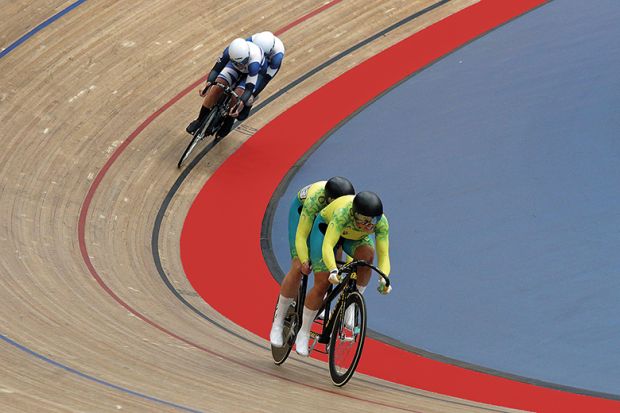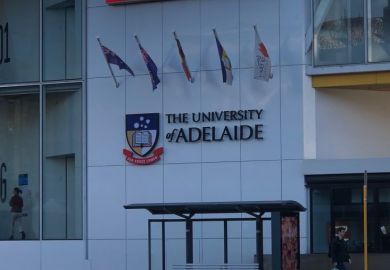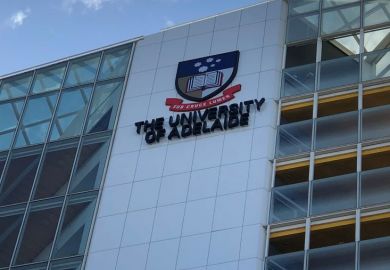University mergers are not common occurrences – particularly not between two large institutions. The marriage between the universities of Adelaide and South Australia will constitute the largest transformation of Australian tertiary education in almost three decades.
Such seismic shifts, of course, tend to be disruptive. And when you do big things, it is only natural that there will be big questions. Together, we spoke to more than 2,000 people in our first week post-announcement and fielded hundreds of questions. Many of them related to why we are doing it. And that is still the question we are most commonly asked – usually combined with an apocryphal prediction of calamitous failure on account of excessive institutional scale.
Why would we not want to continue as we have done for the past 30 years? Why would we not wait until some future point in time when the person asking the question would not be affected? Why do we believe that bigger is genuinely better?
Campus resource: Considering a university merger? Here’s how to do it well
Our answers can be found in the months of planning, strategising, modelling and analysis that we have already done. Combining the strengths of the University of Adelaide and the University of South Australia to create a future-focused university is undoubtedly big, but we know that it is also for the better – because we are purposefully designing it that way.
We too started with the why question. We spent considerable time exploring – and challenging – our shared purpose. We knew that if we could answer the question of why? we could galvanise around the how. We asked what a reimagined university for the future could look like and how we could bring the best together to build something extra, something special.
The first document we shared with our communities was our Vision Statement – our bold-picture view of what we want to achieve. From this, we distilled our plans for the delivery of a sustainable enterprise and the steps we would take to transition to a new shared future. The next step (and there will be many, many steps on this journey) is to authentically partner with our people and communities to design and co-create our future in detail. This is an area where we feel we can break new ground – and one we will return to again in future correspondence.
As recently reported by Times Higher Education, the Australian economy is set to lose A$7 billion (£3.66 billion) by 2026 if we do not address our looming skills shortage – and universities have a significant part to play in remedying this. The Australian National Skills Commission’s employment projections show that in the next few years more than half of all new jobs will be highly skilled, meaning that their incumbents will need university qualifications.
This will require greater higher education participation. So we will need to cast the net wider and encourage more non-traditional engagement through diversity in access and delivery. We will need to challenge corners of our sector where the idea that “education is for everyone” is not taken seriously and vocational education is seen as token or “lesser than”. Such attitudes are incredibly short-sighted; higher education-based vocations such as medicine, teaching, engineering and nursing are the backbone of our nation.
Parallel to the skills challenge is the increasing expense of research and development – and the unfortunate, corresponding decline of investment in it. The value of sovereign research and its contribution to social cohesion and human advancement should not be underestimated.
It might seem a little old-fashioned, but we fervently believe that together, education and research can empower not only those directly involved, but also the communities we serve. These pursuits allow us to think bigger and better, and to go beyond the realm of perceived possibilities to address the multigenerational challenges before us. That is exactly what the new Adelaide University is being engineered to deliver – at scale.
But it would be remiss of us not to reflect on the Universities Accord. Some have held up this ongoing, government-sponsored higher education review as a reason for us to halt progress on our endeavour, on the grounds that the accord calls for a wider variety of higher education provision. But we have worked to ensure that we are intimately involved in this critical process, and our proposed new university for the future is very much in step with the Australian Universities Accord Interim Report, published in July.
There is no preclusion of scale in the accord. The point is simply to establish a better baseline for systemic change and federal funding that can secure the “holy grail” of interdependent education and research that is linked to national priorities. Our future institution will be differentiated in terms of its mission for our state, nation and beyond.
It is quite clear that co-creation will take our ambitions for higher education further, faster than we would ever achieve alone. We will develop a distinctive and contemporary curriculum (more on that another time), research that spans the full value chain, accessibility to people from all geographies and backgrounds, and an increased capacity for innovation and research, with stability against financial disruption.
So we are very clear on the why question. Our focus now is on navigating the inevitable (and appropriate) interrogation of our answers and working with our state parliament to secure the necessary support to deliver this rare opportunity to make truly transformational investments in teaching, learning, research and innovation. And then the building begins.
Peter Høj is vice-chancellor of the University of Adelaide. David Lloyd is vice-chancellor of the University of South Australia.
Register to continue
Why register?
- Registration is free and only takes a moment
- Once registered, you can read 3 articles a month
- Sign up for our newsletter
Subscribe
Or subscribe for unlimited access to:
- Unlimited access to news, views, insights & reviews
- Digital editions
- Digital access to THE’s university and college rankings analysis
Already registered or a current subscriber?








